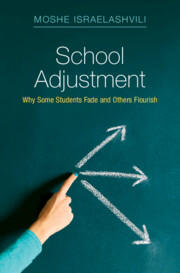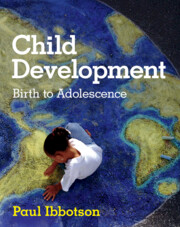Refine search
Actions for selected content:
238 results
Why Treat One’s Children as Equals?
-
- Journal:
- Canadian Journal of Philosophy , FirstView
- Published online by Cambridge University Press:
- 09 December 2025, pp. 1-9
-
- Article
-
- You have access
- Open access
- HTML
- Export citation
3 - Parents Who Came Around
- from Part I - Childhood
-
- Book:
- The Artist's Life
- Published online:
- 04 November 2025
- Print publication:
- 20 November 2025, pp 15-22
-
- Chapter
- Export citation
1 - Supportive Parents
- from Part I - Childhood
-
- Book:
- The Artist's Life
- Published online:
- 04 November 2025
- Print publication:
- 20 November 2025, pp 3-9
-
- Chapter
- Export citation
2 - The Extended Family
- from Part I - Childhood
-
- Book:
- The Artist's Life
- Published online:
- 04 November 2025
- Print publication:
- 20 November 2025, pp 10-14
-
- Chapter
- Export citation
Chapter 3 - Families
-
- Book:
- Local Priests in the Latin West, 900–1050
- Published online:
- 31 October 2025
- Print publication:
- 13 November 2025, pp 87-130
-
- Chapter
-
- You have access
- Open access
- HTML
- Export citation
Chapter 12 - Communication skills with students, staff and parents/caregivers
- from Part IV - Professional engagement
-
-
- Book:
- Learning to Teach in a New Era
- Published online:
- 04 October 2025
- Print publication:
- 25 September 2025, pp 406-435
-
- Chapter
- Export citation
An exploratory pre-post test evaluation of an online family cooking intervention: Up for Cooking
-
- Journal:
- Journal of Nutritional Science / Volume 14 / 2025
- Published online by Cambridge University Press:
- 08 September 2025, e63
-
- Article
-
- You have access
- Open access
- HTML
- Export citation

School Adjustment
- Why Some Students Fade and Others Flourish
-
- Published online:
- 29 August 2025
- Print publication:
- 07 August 2025
How labelling of commercial infant food impacts parents’ beliefs about sugar content and related purchasing and feeding decisions: a scoping review
-
- Journal:
- Public Health Nutrition / Volume 28 / Issue 1 / 2025
- Published online by Cambridge University Press:
- 13 August 2025, e138
-
- Article
-
- You have access
- Open access
- HTML
- Export citation
Parents’ Insights on Post-Transition Support for Students on the Autism Spectrum in Secondary Schools
-
- Journal:
- Australasian Journal of Special and Inclusive Education / Volume 49 / Issue 2 / December 2025
- Published online by Cambridge University Press:
- 10 July 2025, pp. 111-125
-
- Article
-
- You have access
- Open access
- HTML
- Export citation
The impact of COVID-19 on parents from Black ethnic backgrounds in the UK: what we have learned and why it still matters
-
- Journal:
- BJPsych Open / Volume 11 / Issue 4 / July 2025
- Published online by Cambridge University Press:
- 08 July 2025, e143
-
- Article
-
- You have access
- Open access
- HTML
- Export citation
“I’m not a physician, but i’m the expert for my child” experiences of parents caring for their child with a life-limiting condition in an inpatient setting – A qualitative study
-
- Journal:
- Palliative & Supportive Care / Volume 23 / 2025
- Published online by Cambridge University Press:
- 25 June 2025, e127
-
- Article
-
- You have access
- Open access
- HTML
- Export citation

Child Development
- Birth to Adolescence
-
- Published online:
- 19 June 2025
- Print publication:
- 12 June 2025
-
- Textbook
- Export citation
Chapter 12 - How do I work with colleagues, parents/caregivers and the community?
- from Part 3 - Working in education contexts
-
-
- Book:
- Introduction to Education
- Published online:
- 14 June 2025
- Print publication:
- 02 June 2025, pp 315-338
-
- Chapter
- Export citation
TOPSE for babies in Norwegian: examining the reliability of a tool to measure parenting self-efficacy
-
- Journal:
- Primary Health Care Research & Development / Volume 26 / 2025
- Published online by Cambridge University Press:
- 24 April 2025, e38
-
- Article
-
- You have access
- Open access
- HTML
- Export citation
Examining the unique contribution of parent anxiety sensitivity on adolescent neural responses during an emotion regulation task
-
- Journal:
- Development and Psychopathology , First View
- Published online by Cambridge University Press:
- 10 April 2025, pp. 1-11
-
- Article
-
- You have access
- Open access
- HTML
- Export citation
2 - Getting Entrenched
-
- Book:
- Who Controls Education?
- Published online:
- 26 March 2025
- Print publication:
- 03 April 2025, pp 36-60
-
- Chapter
- Export citation
Healthcare professionals’ discussion of loss and grief with parents of children with life-limiting severe neurological impairment: Findings from a scoping review
-
- Journal:
- Palliative & Supportive Care / Volume 23 / 2025
- Published online by Cambridge University Press:
- 21 February 2025, e58
-
- Article
-
- You have access
- Open access
- HTML
- Export citation
In Defence of the Best Interest Standard: A Fiduciary Duty
-
- Journal:
- Dialogue: Canadian Philosophical Review / Revue canadienne de philosophie / Volume 63 / Issue 3 / December 2024
- Published online by Cambridge University Press:
- 23 January 2025, pp. 475-496
-
- Article
-
- You have access
- Open access
- HTML
- Export citation
14 - Adolescent Disclosure with Parents versus Siblings and Friends
- from Part III - Informant and Contextual Differences in Disclosure and Secrecy
-
-
- Book:
- The Cambridge Handbook of Parental Monitoring and Information Management during Adolescence
- Published online:
- 12 December 2024
- Print publication:
- 19 December 2024, pp 282-302
-
- Chapter
- Export citation
